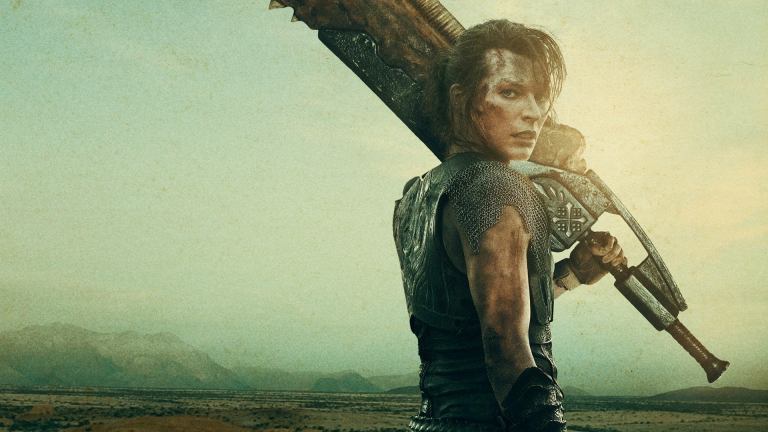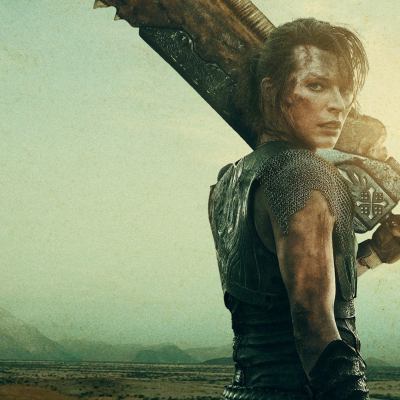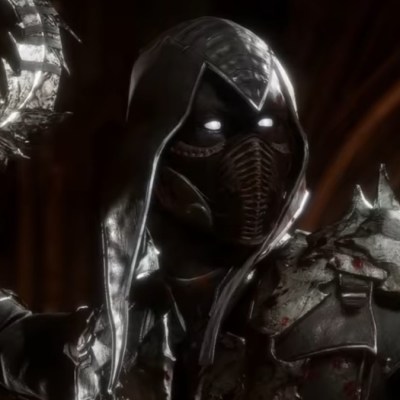How Monster Hunter’s Paul W.S. Anderson Brought Big Swords and Big Monsters to the Big Screen
You have to go big when you're making a Monster Hunter movie, but as director Paul W.S. Anderson explains, the smaller touches are what makes it all work.

When Monster Hunter‘s Paul W.S. Anderson directed Mortal Kombat in 1995, the very idea of a video game movie adaptation was still very much a novelty. 26 years later, Anderson has directed five more video game movie adaptations. Did he ever think so much of his career would be defined by helping bring video games to the big screen?
“Lots of directors, they adapt stage plays into movies,” Anderson says. “But I don’t go to the live theater very much. I play video games…so I always imagined that I would do other video game adaptations.”
There was a time when Anderson’s desire to adapt video games felt like little more than wishful thinking. While it currently feels like every video game franchise is scheduled to be adapted into a movie or TV series, that wasn’t always the case. Actually, it sounds like some studios may have been secretly ashamed of being associated with such projects.
“When I was pitching to get the job on Mortal Kombat, a lot of people were very snooty about it,” Anderson recalls. “The fact that I wanted to do something based on video games, especially after several video game movies kind of hadn’t really worked was kind of looked down upon. I never agreed with that. I always thought that it was a really valid form of intellectual property to adapt.”
One of the things that helped separate Mortal Kombat from the adaptions that came before was Anderson’s genuine love for the game and his desire to make a movie that was more than another piece of the Mortal Kombat product line. When it comes to Monster Hunter, it turns out that not much has changed over the years.
“I played [Monster Hunter] for the first time and just fell in love with it and with the world that had been created. I felt a real sense of awe the first time I played the game,” Anderson says. “I felt like I was Sam Neill seeing dinosaurs for the first time in Jurassic Park. I thought, ‘Oh, my God. This is amazing, this world.’”
Anderson isn’t alone there. The Monster Hunter franchise has captivated millions since it debuted in 2004. However, it wasn’t until recently that Monster Hunter became a truly global franchise. So far as that goes, Anderson has a theory as to why it took a little while for the games to find a larger international audience.
“I think one of the things that maybe held the games back was that the original iterations focused on cooperative gameplay,” Anderson theorizes. “In the West, and specifically in America, a lot of people do like to kind of play by themselves, whereas, originally, Monster Hunter was really based on people sitting around together and playing on handheld gaming platforms. That is not as big of a thing in the West. So, they built a new version of Monster Hunter that, I think, appealed to the rest of the world while also keeping the core values of Monster Hunter.”
In his own way, Anderson is also trying to find a way to retain the core values of the Monster Hunter franchise while reaching a new audience. Actually, one of the values he was most interested in retaining is one he feels may have alienated some people in the early days of the franchise: cooperation.
“I think we live in particularly divisive times right now, where, even before COVID-19, it looked like the world was closing down,” Anderson says. “People were closing their borders. People didn’t want to hear other people’s opinions. I think the game and the movie have a message at their heart, which is that people from different cultures and different backgrounds need to learn how to work together for the greater good. I think that’s a good and timely message.”
Of course, when many people think of the Monster Hunter franchise, they tend to picture the two things the series is arguably best known for: big monsters and big weapons. While Anderson was just as committed to bringing both to the appropriately big screen, each of those elements of the franchise presented considerable difficulties.
“When you make a visual effects movie, as we have with, say, Resident Evil, and you’re fighting a CG creature, a lot of CG creatures tend to be roughly the size of a human being,” Anderson says. “So you can have a human being stand-in wear a green screen suit or gray suit with tracking markers on it, and the actors have something to interact with. It’s not so easy when your monsters are kind of 30 foot tall. You just can’t go get a really, really big guy.”
With the big guy option sadly off the table, Anderson and his crew had to find other ways to help the stars feel like they were actually working with the CGI monsters they face in the film. Their solution was actually quite brilliant.
“We carried a drone with us to all of the locations so that I could put the drone at the exact height of the creature and the actors would have an eye line,” Anderson explains. “If they were going to look the creature in the eyes, they could look straight to the drone. Those shots could then function as kind of point-of-view shots, or we could back them up a little bit and do over-the-shoulder shots of the creatures.”
Monster Hunter’s giant weapons presented their own production problems. While Anderson knew the movie’s weapons needed to be larger than life, seeing them for the first time proved to be something of a wake-up call.
“I definitely was a little nervous, to be honest, because we built them as big as we could,” Anderson says of the movie’s arsenal. “I’d look at them on the prop table, and they were super heavy, and they were super big. And it’s one thing when you’re playing the video game and wielding these weapons when you’re a character made out of pixels. It’s quite another when you’re a human being and you’re working within the laws of gravity.”
As it turned out, though, Monster Hunter co-star Tony Jaa was more than ready to defy those laws.
“Almost immediately, he began spinning [a great sword] around his head and around his body and doing these incredible moves.” Anderson recalls. “It was wonderful to see, and he did so well that we then gave him the great bow to handle, as well. It’s like, ‘Oh, so, if you can handle one giant weapon, how about two?’”
Of course, when it comes to Monster Hunter, scenes featuring warriors spinning giant weapons around are more than spectacle. While the series boasts an expansive mythology, it’s not really known for its moment-to-moment storytelling or deep character building. Once again, though, Anderson and crew found a way to get those basic storytelling ideas through without abandoning too much of what made the games work.
“Tony would come up to me at the end of the day. He’d say, ‘Paul, that was good character building,’” Anderson recalls. “And you know what? He was right. I’ve always been a big believer, as Tony is, that a lot of character can come out of action. Character doesn’t necessarily need to spring from people sitting around, talking about their emotions.”
As for the film’s many monsters, Anderson chose to develop their characters through a somewhat similar trial by fire method.
“When you play the game, the creatures inhabit a very well-developed ecosystem,” Anderson explains. “That’s what we were trying to do in the movie. Give yourself enough time to really get to know a creature and get to know its strengths and weaknesses. That’s how you ultimately bring these creatures down, both in the game and in the movie…It’s very important that Milla and Tony kind of realize the weaknesses of the Diablos in order to be able to kind of defeat it. And, as anyone who plays the game will know, it’s not easy. The first time you play the game, these monsters just kick your ass.”
When it came to getting the look, feel, and habits of those creatures right, it certainly didn’t hurt that the Monster Hunter development team proved to be one of the film’s most enthusiastic collaborators.
“To be honest, I would say that Monster Hunter is the highest level of input that I’ve ever had from a game creator,” Anderson says. “Because I’m dealing with somebody else’s world, that it was already created, I leaned very heavily on talking to Capcom about what that world should be…I have to thank Capcom because all I did was kind of copy [the monsters] directly from the games.”
Between Capcom’s support, the movie’s cliffhanger ending, and the movie industry’s love of franchises, you may think that a Monster Hunter sequel is all but guaranteed. However, it doesn’t seem like anyone is thinking that far ahead quite yet.
“I just want people to see and enjoy the first movie, to be honest. I’m not thinking too much about the future,” Anderson says. “The future, for me, is kind of launching Monster Hunter and kind of getting it out into the world. And it’s been an 11-year journey for me and been a real labor of love, a passion project of mine and of the people at Capcom being involved in the film as well. And I think we all just want to kind of really focus on the first movie really, really delivering to the fans, which I think it does.”
You can watch Monster Hunter at UK and Ireland cinemas and IMAX now.


